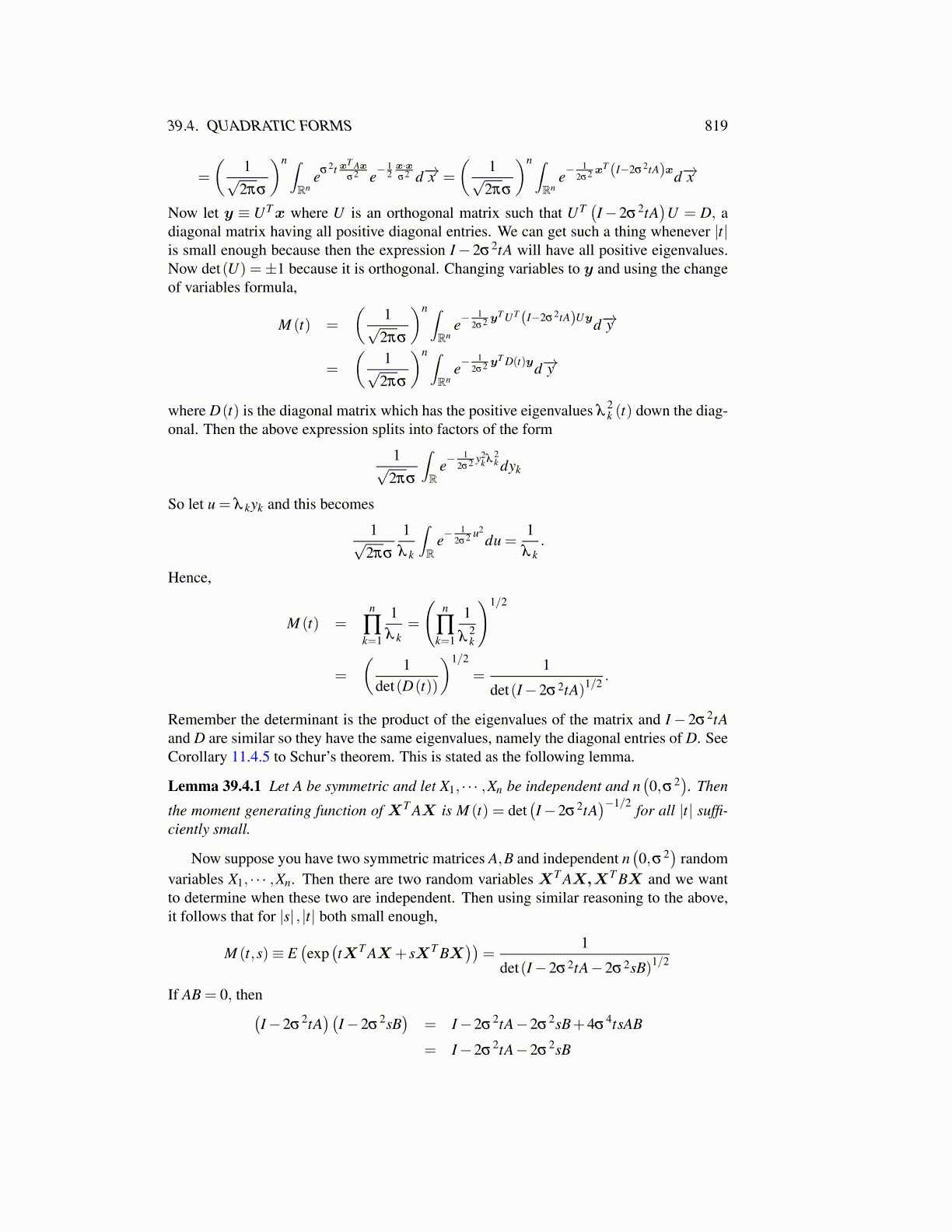
39.4. QUADRATIC FORMS 819
=
(1√
2πσ
)n ∫Rn
eσ2t xT Axσ2 e−
12x·xσ2 d−→x =
(1√
2πσ
)n ∫Rn
e−1
2σ2 xT (I−2σ2tA)xd−→x
Now let y ≡ UTx where U is an orthogonal matrix such that UT(I−2σ2tA
)U = D, a
diagonal matrix having all positive diagonal entries. We can get such a thing whenever |t|is small enough because then the expression I− 2σ2tA will have all positive eigenvalues.Now det(U) =±1 because it is orthogonal. Changing variables to y and using the changeof variables formula,
M (t) =
(1√
2πσ
)n ∫Rn
e−1
2σ2 yT UT (I−2σ2tA)Uyd−→y
=
(1√
2πσ
)n ∫Rn
e−1
2σ2 yT D(t)yd−→y
where D(t) is the diagonal matrix which has the positive eigenvalues λ2k (t) down the diag-
onal. Then the above expression splits into factors of the form
1√2πσ
∫R
e−1
2σ2 y2kλ
2k dyk
So let u = λ kyk and this becomes
1√2πσ
1λ k
∫R
e−1
2σ2 u2du =
1λ k
.
Hence,
M (t) =n
∏k=1
1λ k
=
(n
∏k=1
1
λ2k
)1/2
=
(1
det(D(t))
)1/2
=1
det(I−2σ2tA)1/2 .
Remember the determinant is the product of the eigenvalues of the matrix and I− 2σ2tAand D are similar so they have the same eigenvalues, namely the diagonal entries of D. SeeCorollary 11.4.5 to Schur’s theorem. This is stated as the following lemma.
Lemma 39.4.1 Let A be symmetric and let X1, · · · ,Xn be independent and n(0,σ2
). Then
the moment generating function of XT AX is M (t) = det(I−2σ2tA
)−1/2 for all |t| suffi-ciently small.
Now suppose you have two symmetric matrices A,B and independent n(0,σ2
)random
variables X1, · · · ,Xn. Then there are two random variables XT AX,XT BX and we wantto determine when these two are independent. Then using similar reasoning to the above,it follows that for |s| , |t| both small enough,
M (t,s)≡ E(exp(tXT AX+ sXT BX
))=
1
det(I−2σ2tA−2σ2sB)1/2
If AB = 0, then(I−2σ
2tA)(
I−2σ2sB)
= I−2σ2tA−2σ
2sB+4σ4tsAB
= I−2σ2tA−2σ
2sB